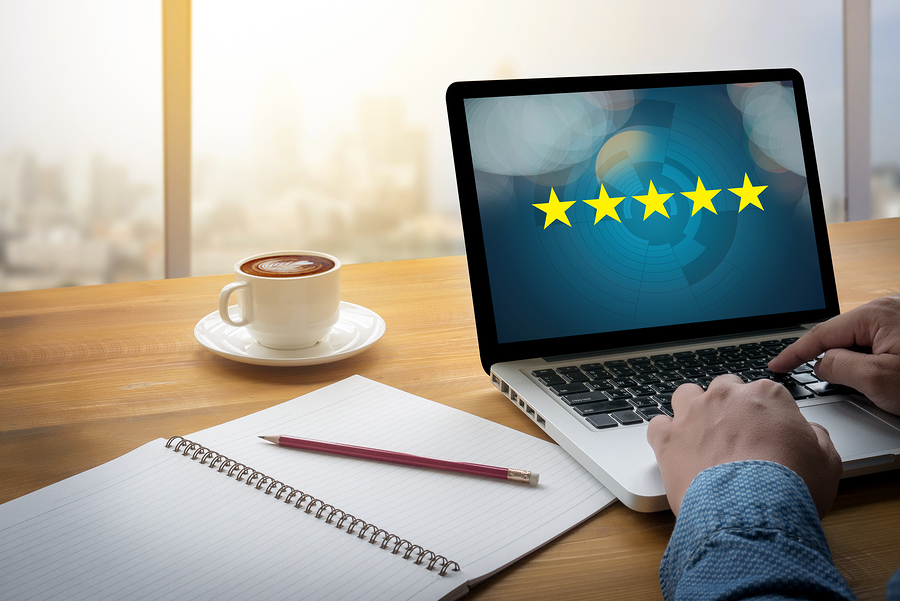If you had to rate your customer service skills on a scale of 1 to 5 stars, 1 being the lowest and 5 being the highest, how many stars would you give yourself? Could there possibly be room for improvement?
Customer Service means different things to different people. For example:
- Having a LIVE person answer the business line
- Answering on or by the second ring
- Providing quality service
- Responsiveness to customer emails
- How well you determine and meet customer needs
Next, let’s discuss customer experience…
Did you know that ‘86% of buyers will PAY MORE for a better customer experience’?
“Customer experience is your customers’ perception of how the company treats them. These perceptions affect their behaviors and build memories and feelings and may drive their loyalty. In other words: if they like you and continue to like you, they are going to do business with you and recommend you to the others.”
I once had a web developer tell me I was asking too many questions. It was our first time working together and their resolutions were written in such complex coding terminology, that I had to ask questions in order to understand what they were asking of me, and keep the project moving. After informing me I was asking too many questions, they said it was wasting their time and money, and that I should find another contractor after the project was complete. This was both hurtful and offensive.
When I think about the hours I have given away on free consultations, and the valuable projects I have gained from them, I don’t think a price tag can be placed on these projects. Small or large, they are valuable clients and have indirectly provided for me and my family for over 20 years. You want to know what the best part is? They keep coming back year after year.

So, when is it a good time to turn away a client? Is there a formula for such calculations? Is our job so ‘secure’ that we can afford to do so?
I believe that if you set the ground rules in advance, you can certainly afford a buffer of some kind for client questions throughout the project. For example, I offer free one hour consults. If we go over the hour, the client knows they will be billed for the rest of the time at my hourly rate.
Additionally, throughout a project, email questions and project meetings are billed under Project Management hours set forth in the SOW.
The only time I’ve had to turn away a prospective client, was when I could not meet their needs or they could not afford my services. Note: Meeting their needs means I did not offer, or could not provide, what they were looking for. And even in such instances, I defer to my virtual rolodex and try to refer them to one of my associates who may be able to help.
Question: How well do you know your customers? Do you know what state they live in (i.e. what the weather is like in their region), if they have a family, what their likes and dislikes are? “Once you know your customers well enough, you can use that knowledge to personalize every interaction.”
Bottom line:
“If you make sure their interaction with your company is smooth, pleasant and continuously improving, you will drive brand loyalty. If not, you’ll give your competitors the best gift – your customers.”
I’ll never forget a phone call to my toll-free number many years ago. It was a client looking for help with an e-Learning project. She had called five companies in a row and received their voicemail each time. She left message after message, but no one called her back. She finally dialed my number later that evening. It was close to closing time, but I picked up on the second ring.
She told me that I was the only company who answered the phone, that she liked my presentation and ideas, and wanted to give me the project.
It’s as simply as that.
In my opinion, there is no ‘security’ in business and ‘tomorrow’ is not promised. So be sure to value each existing and prospective client with that in mind.
“…according to a Walker study, by the year 2020 customer experience will overtake price and product as the key brand differentiator.”
What type of experience are you creating for your clients/customers ‘during’ a project? Quick responses to emails, project check-in calls, ease of communication, such as chat or video conferencing, easy file sharing, and so on.
We’d LOVE to hear your thoughts on what customer service or the customer experience means to YOU, in the comments below!
Until next time…
Source: https://www.superoffice.com/blog/customer-experience-statistics/
About the Author
Cheryl Powell, CEO of GC Learning Services LLC dba Learn2Engage, is in her 22nd year as a Virtual Instructional Design and e-Learning Specialist, with clients all over the US and overseas. Additionally, she is a published author of various works of fiction and motivational speaker.
Her industry experience industry experience is vast, and includes Telecommunications, Finance (Mortgage, Banking and Credit industry), Sales, Pharmaceutical, Media, Software Development, Healthcare, Food and Beverage, and many more.
She holds a Bachelor in Business Management, a graduate certification in Project Management, and a Master of Science degree in IT Project Management. She has studied the Adult Learning principles of experts and theorists such as Gagne’s (nine events), Maslow’s (hierarchy of needs), and Dr. Ruth Clark, to ensure her courses, presentations, storyboards and modules, engage the learner, utilize the proper balance of white space, text and graphics, and result in high Learner Retention rates.
Her clients return year after year for the affordable pricing, her rapid customer response rate, and the benefits they observe in the productivity of their employees after taking her courses.

